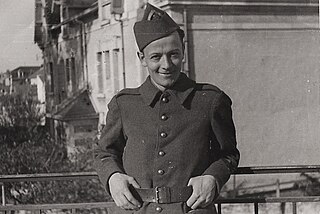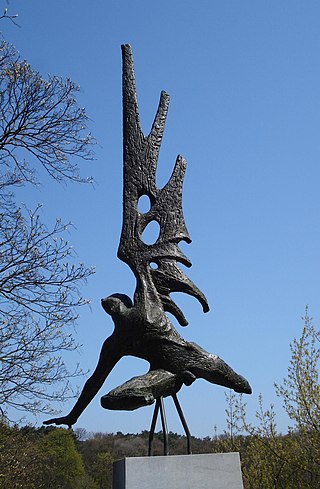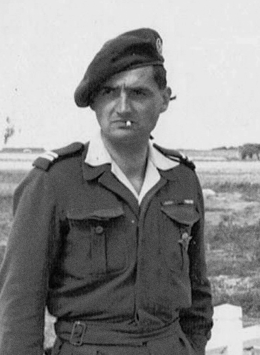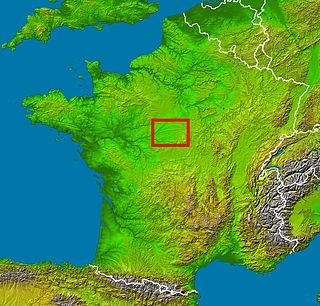The Special Operations Executive (SOE) was a secret British World War II organisation. It was officially formed on 22 July 1940 under Minister of Economic Warfare, Hugh Dalton, by the amalgamation of three existing secret organisations. Its purpose was to conduct espionage, sabotage and reconnaissance in occupied Europe against the Axis powers, and to aid local resistance movements.
The SOE F Section timeline lists the significant events in the history of Section F of the Special Operations Executive. The Special Operations Executive (SOE) was a clandestine organization of the United Kingdom during World War II. The purpose of SOE was to conduct espionage, sabotage, and reconnaissance in countries occupied by the Axis powers. SOE agents allied themselves with resistance groups and supplied them with weapons and equipment parachuted in from England. Section F was responsible for many of SOE's activities in France which was occupied by Nazi Germany.
Operation Savanna was the first insertion of SOE trained Free French paratroops into German-occupied France during World War II.

The Norwegian heavy water sabotage was a series of Allied-led efforts to halt German heavy water production via hydroelectric plants in Nazi Germany-occupied Norway during World War II, involving both Norwegian commandos and Allied bombing raids. During the war, the Allies sought to inhibit the German development of nuclear weapons with the removal of heavy water and the destruction of heavy-water production plants. The Norwegian heavy water sabotage was aimed at the 60 MW Vemork power station at the Rjukan waterfall in Telemark.

Georges Pierre André Bégué, code named Bombproof, was a French engineer and agent of the United Kingdom's clandestine organization, the Special Operations Executive (SOE). The purpose of SOE in France, occupied by Nazi Germany in World War II, was to conduct espionage, sabotage, and reconnaissance. SOE agents allied themselves with French Resistance groups and supplied them with weapons and equipment parachuted in from England.
A limpet mine is a type of naval mine attached to a target by magnets. It is so named because of its superficial similarity to the shape of the limpet, a type of sea snail that clings tightly to rocks or other hard surfaces.

Pessac is a commune in the Gironde department in Nouvelle-Aquitaine in southwestern France. It is a member of the metropolis of Bordeaux, being the second-largest suburb of Bordeaux and located just southwest of it. Pessac is also home to Bordeaux Montaigne University and the Institut d'études politiques de Bordeaux.

Englandspiel, or Operation North Pole, was a successful counterintelligence operation of the Abwehr from 1942 to 1944 during World War II. German forces captured Allied resistance agents operating in the Netherlands and used the agents' codes to dupe the United Kingdom's clandestine organization, the Special Operations Executive (SOE), into continuing to infiltrate agents, weapons, and supplies into the Netherlands. The Germans captured nearly all the agents and weapons sent by the United Kingdom (Britain).

The Area Bombing Directive was a directive from the wartime British Government's Air Ministry to the Royal Air Force, which ordered RAF Bomber Command to destroy Germany's industrial workforce and the morale of the German population, through bombing German cities and their civilian inhabitants.

Claude Marie Marc Boucherville de Baissac, DSO and bar, CdeG, known as Claude de Baissac or by his codename David was a Mauritian of French descent who was an agent of the United Kingdom's clandestine Special Operations Executive (SOE) organization in France during World War II. The purpose of SOE was to conduct espionage, sabotage, and reconnaissance in countries occupied by the Axis powers, especially Nazi Germany. SOE agents allied themselves with resistance groups and supplied them with weapons and equipment parachuted in from England.
Operation Bulbasket was an operation by 'B' Squadron, 1st Special Air Service (SAS), behind the German lines in German occupied France, between June and August 1944. The operation was located to the east of Poitiers in the Vienne department of south west France; its objective was to block the Paris to Bordeaux railway line near Poitiers and to hamper German reinforcements heading towards the Normandy beachheads, especially the 2nd SS Panzer Division – Das Reich.
Major Cecil Vandepeer Clarke MC (1897–1961) was an engineer, inventor and soldier who served in both the First and Second World Wars.

Comte Robert Jean Marie de La Rochefoucauld was a member of the French Resistance and the Special Operations Executive (SOE) during World War II, and later served as the mayor of Ouzouer-sur-Trézée, a canal town in the Loire Valley, for thirty years. In honour of his work for France and as a secret agent for the British during the war, La Rochefoucauld was awarded the orders Chevalier de la Légion d’Honneur, Croix de Guerre, Médaille de la Résistance and the British Distinguished Service Order and Distinguished Conduct Medal.
Benjamin Hodkinson Cowburn, Croix de Guerre, Chevalier of the Legion of Honour (1909–1994), code named Benoit and Germain, was an agent of the United Kingdom's clandestine Special Operations Executive (SOE) organization during World War II. He was the creator and leader of the Tinker network which operated in the area of Troyes, France. The purpose of SOE was to conduct espionage, sabotage, and reconnaissance in countries occupied by the Axis powers, especially Nazi Germany. SOE agents allied themselves with resistance groups and supplied them with weapons and equipment parachuted in from England.
Joël Andre Le Tac was a member of the Free French Forces (FFF) during the Second World War.
Charles Milne Skepper was an economist and socialist intellectual who joined the British Special Operations Executive (SOE) to operate in occupied France during the Second World War carrying out sabotage and spying missions until he was taken prisoner. He was tortured for information and subsequently murdered by the Gestapo.

Aston House was a prominent 17th-century residence with large parkland situated opposite the parish church in Aston, Hertfordshire in southern England. The house was demolished in 1961 by the Stevenage New Town Development Corporation after occupying it as its initial HQ. The site was developed and named Yeomans Drive in memory of Arthur Yeomans, the last owner in 1939 when it was requisitioned by the War Office. The adjoining parkland became Stevenage Golf and Conference Centre in April 1980.

Philippe Albert de Crevoisier, Baron de Vomécourt, code names Gauthier and Antoine, was an agent of the United Kingdom's clandestine Special Operations Executive (SOE) organization in World War II. He was the organiser (leader) of the Ventriloquist network from May 1941 until the liberation of France from Nazi German occupation in September 1944. The purpose of SOE in occupied France was to conduct espionage, sabotage and reconnaissance. SOE agents allied themselves with French Resistance groups and supplied them with weapons and equipment parachuted in from England. The primary area of Vomécourt's activity was in the Sologne region about 160 kilometres (99 mi) south of Paris. Philippe's older brother Jean and younger brother Pierre were also members of the French Resistance.

Michael Alfred Raymond Trotobas, code named Sylvestre and known in France as Capitaine Michel, was an agent of the United Kingdom's clandestine Special Operations Executive (SOE) organization during World War II in France. The purpose of SOE was to conduct espionage, sabotage, and reconnaissance in countries occupied by the Axis powers, especially Nazi Germany. SOE agents allied themselves with resistance groups and supplied them with weapons and equipment parachuted in from England.

Wilhelm Christopher Holst was a Norwegian businessman who worked for the French resistance movement Free France during World War II, as a P2 agent and Chef de Reseau Billett (Alexandre) in France.











